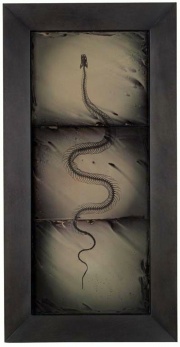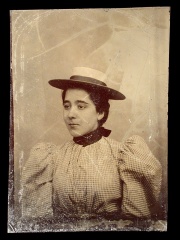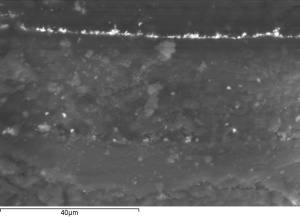Tintype
Description
An inexpensive positive photograph made using a collodion emulsion on a black enameled tinplate. The process for making tintype, or ferrotype, photographs was patented in 1856 and used up to the 1940s. Tintype plates contained a thin layer of photoreactive collodion coated on a black lacquered iron sheet. They produced a direct positive image that was processed quickly and inexpensive. The images often had poor contrast levels ranging from a dull grays to creamy whites. Tintypes were typically pasted in paper cards with decorative embossed borders. They were called ferrotypes outside the USA.
Synonyms and Related Terms
ferrotype; ferrotyping; melainotype; tin type (sp)
Hazards and Safety
Moisture may rust iron plate
Contact with smooth surfaces, such as glass or polyester, may cause shiny spots
Additional Images
Sources Checked for Data in Record
- Encyclopedia Britannica, http://www.britannica.com Comment: "Tintype." Encyclopædia Britannica. 2004. Encyclopædia Britannica Premium Service. 29 Apr. 2004 .
- Luis Nadeau, Encyclopedia of Printing, Photographic, and Photomechanical Processes, Atelier, New Brunswick, 1997
- Caring for your Collections, Arthur W Schulz (ed.), Harry N. Abrams, Inc. , New York, 1992
- The American Heritage Dictionary or Encarta, via Microsoft Bookshelf 98, Microsoft Corp., 1998
- Website address 1 Comment: AMOL reCollections Glossary -http://amol.org.au/recollections/7/c/htm - synonym=melainotype








